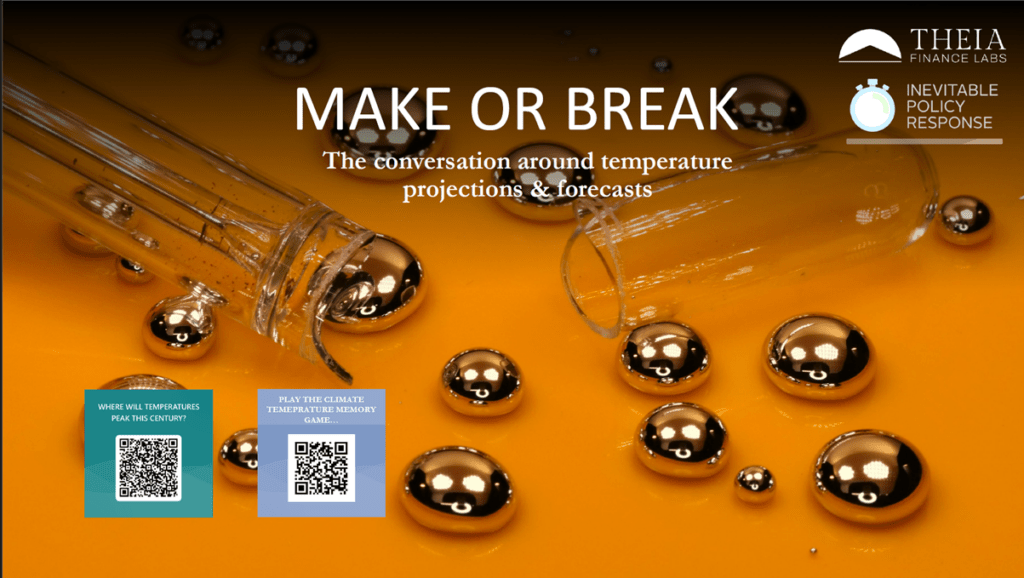There is widespread uncertainty about how to interpret the proliferation of ‘temperature projections’ currently available in the market.
Media reports, press releases, and newsletters provide a plethora of different angles on the temperature discourse, ranging from the 1.5°C no overshoot roadmaps of the IEA and others, to business as usual projections assuming that the ceiling to government ambition is effectively limited by the Nationally Determined Contributions (NDCs). There are even some organizations (e.g. FinanceWatch) that suggest we remain on a +3°C world.
Between these two poles in turn is a wide range of analysis, including temperature projections reflecting assumptions around some policy acceleration based on policy announcements (e.g. IEA Stated Energy Policy Scenario), private sector analysis (e.g. MSCI, Blackrock), models of the implications of government net zero targets (e.g. IEA Announced Pledges Scenario) and actual forecasts involving assessing the most likely policy development over the next decades (e.g. Inevitable Policy Response IPR, Rhodium Group). In principle, each of these serve a different purpose, however, media coverage and lack of nuance in their presentation make it difficult to understand why these analyses are different and which analysis is the most relevant for understanding the different transition pathways at play.
Theia Finance Labs third Make or Break note, published in collaboration with Inevitable Policy Response, seeks to address this confusion by outlining the key distinctions and steps across different temperature projections.
The note will seek to illustrate each level of the temperature curve, starting at the pre-Paris agremenet +3.6°C pathway projections to the 1.5°C no overshoot scenarios. The goal is to help illustrate why not all reports arrive at the same temperature outcome, and illustrate what some of the key differences are in the assumptions or approaches across different projections.
We consider this a make or break issue as the temperature debate is increasingly becoming a challenge for the sustainable finance community. On the one hand, there is growing consensus across the scientific community that the 1.5°C no overshoot goal is no longer realistic. On the other hand, the mainstream narrative suggests that we remain on ~3°C pathway, despite the apparent policy progress over the past few years. While temperature debates are inherently challenged by the uncertainty around forcing effect of GHG emissions, they anchor the public discourse on progress towards climate goals. We consider that addressing this debate is crucial in order to help anchor market expectations around temperatures, understand the roadmap we are actually on, and the remaining feasibility of the well-below 2°C goal in light of the growing challenges associated with the 1.5°C objective.



